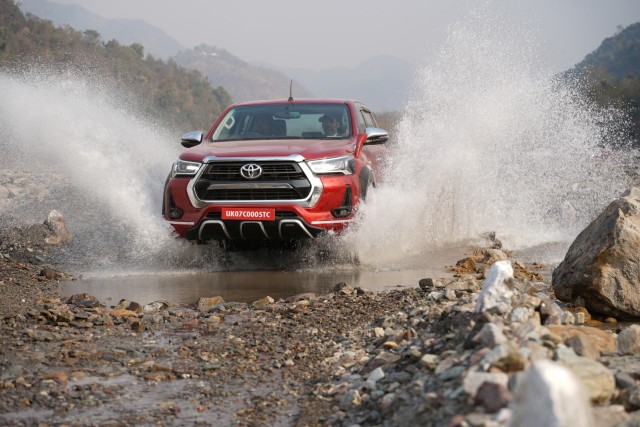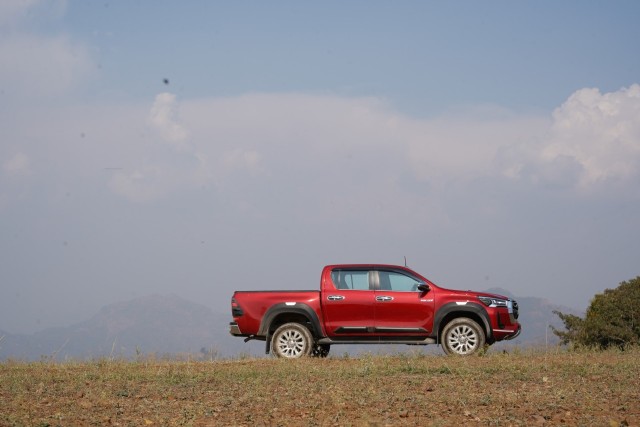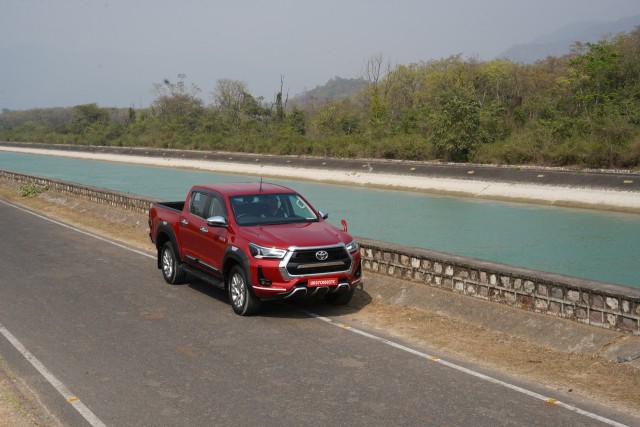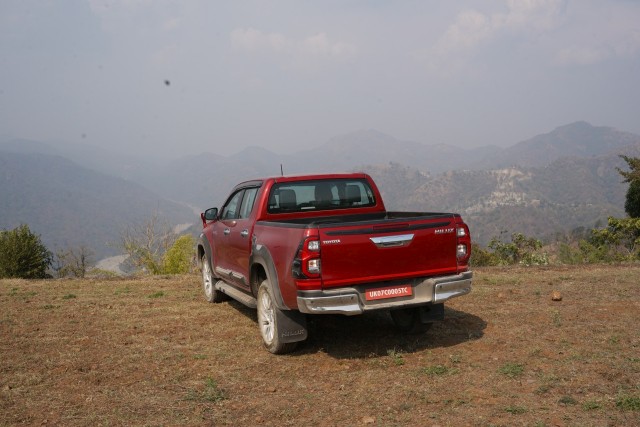The Toyota Hilux is a pick-up truck. A very good one at that. We know it’s good, it’s the stuff of legend, but how good is it really? We headed up—and down—the trail of a national park to get a first-hand experience.

Story: Jim Gorde
Photography: Apurva Ambep

Believe the hype. The Toyota Hilux is every bit as exceptional, capable, ready-for-anything, and reliable as they all say it is. While I stand by my opinion that the feature on the Hilux the most popular automotive show on TV did more for it than all the PR in the world could, there is definitely truth to its capabilities highlighted in the film. Yes, I didn’t have the Hilux dropped from the top of a building scheduled for demolition nor did I try starting it after fishing it out of the sea, but its capabilities on the challenging terrain I encountered, plus whatever passes off as roads, go to show that it is indeed as rugged as anyone would want their off-road-ready car. So, let’s get down to the details.
I am not one to hide my adoration for the Isuzu D-Max V-Cross. In fact, anyone who asks for a car below Rs 30 lakh, that is the only name I suggest at first. Yes, the Toyota Hilux starts where the D-Max ends, at Rs 30.40 lakh for the entry 4×4 MT, a good Rs 3.40 lakh over the comparable top-end V-Cross Z Prestige 4×4 AT. And, yes, they’re both rugged and rather premium pick-up trucks, but the Hilux is only slightly longer and higher—by 30 millimetres each—than the D-Max, which is also five millimetres wider, and has a wheelbase 10 mm longer than the Hilux. Where the Yokohama side of Japan falls short over the folks at Toyota, Aichi is in the engine department. The Hilux has a larger 2,755-cc engine over the former’s 1,898-cc unit, both being in-line four-cylinder, turbo-diesel engines. The power and torque difference and the way they are delivered also differ: 163 hp and 360 Nm versus 204 hp and a V8-like 500 Nm. It’s a tough call. However, the GM underpinnings (Hello, Trailblazer with a bed) mean that the Toyota feels a bit more rugged and has a slightly better rear occupant area with the seat-back angle a little less upright than the V-Cross—really my only quip about that lovely car. But, back to the Toyota Hilux.

Toyota Kirloskar Motor chose Rishikesh and the Rajaji National Park to host us for the drive. We started from the banks of the iconic river Ganga, literally, and headed for a short bit down Virbhadra Road through the city and across the Barrage and the Cheela Dam road to the foothills of the Park. After entering the confines, the rather nice stretch of tarmac gave way to a dirt trail just about wide enough for a Toyota Hilux and a Fortuner to barely make it side by side. The road forked into two—Kimsar and Vindhyavasini. We would start from the right, entering the Park, climbing up to the top, then circle through and come down the other way, crossing over the river bed in the process.
Toyota had arranged a number of obstacle courses towards the end of the leg in the river bed, including both negative and positive gradient climbs, a run through chicken holes, a water wading section, and steep hill ascent and descent sections. But first, we had a rather treacherous uphill section of the Park to contend with. The Hilux we had was the 4×4 AT High with us, of course; there is only one top-spec automatic trim, with the diesel engine and 4×4 driveline standard across the range. This one gets high and low ratios plus the diff lock enabling it to take on some truly demanding terrain with ease. It looks inimitable and all-conquering. It had road presence beyond that of even the Fortuner, and, I imagine, it looks truly intimidating in any rear-view mirror.





















Leave a Reply